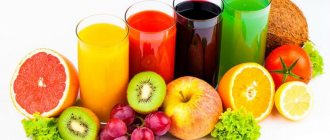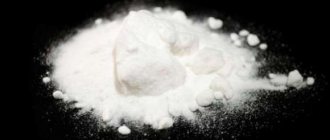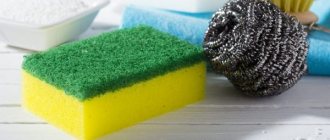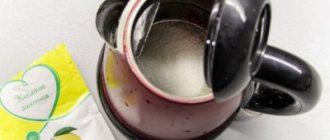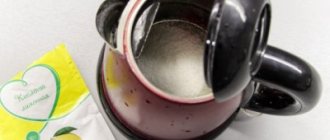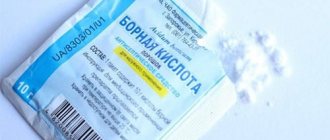If you think that citric and ascorbic acids are no different, read the article. It explains everything.
For many, the terms ascorbic acid and citric acid are identical, but in reality they are not. After all, these are completely different things, although they are found mainly in citrus fruits and have nutritional properties.
Read another interesting article on our website on the topic: “Treatment of various diseases with lemon . You will learn about the benefits of lemon for weight loss.
From this article you will learn what ascorbic and citric acids are and how they differ. Read on.
What is ascorbic acid?
Ascorbic acid
The iHerb website offers many dietary supplements with ascorbic acid . These are really the remedies that will benefit the body.
The value of ascorbic acid, best known as vitamin C , has not been in doubt for a long time. It is indispensable in numerous processes occurring in the human body. However, ascorbic acid is not produced by the body on its own and does not accumulate in tissues, so it is very important to obtain it through food. What is ascorbic acid?
Vitamin C takes part in the synthesis of collagen, which is the foundation of the structure of our skin, ligaments, cartilage and tendons, and is also found in the walls of blood vessels, teeth, nails and the muscular system. This synthesis helps protect the body from premature aging. But this is not the only beneficial property of vitamin C.
- It helps the body fight various infectious and inflammatory diseases, and also accelerates the healing process of wounds.
- Taking ascorbic acid lowers blood pressure and strengthens the walls of blood vessels, which helps reduce the risk of developing cardiovascular diseases.
- A lack of vitamin C leads to bleeding gums, anemia and deterioration of the skin and nails.
Rich sources of ascorbic acid are:
- Dog-rose fruit
- Black and red currants
- Strawberries
- bell pepper
- White cabbage and cauliflower
- Sorrel
- Parsley
- Dill
- Potato
- Apples
- Tomatoes
- Citrus
But it is worth remembering that heat treatment and long-term freezing of these products reduces the level of vitamin C . The daily intake of ascorbic acid is 75 g for a woman, and 90 g for a man.
Alternatives
It is possible to clean the oven efficiently using other means. There are many time-tested folk recipes and special preparations that can cope with fat and soot.
Their use certainly competes with citric acid. After reviewing the most popular ones, you can decide which one to choose.
TOP 3 folk recipes
Among the best recipes are those that are least aggressive to the enamel coating and safe for humans. The ones listed here are effective and easy to use:
- An original tandem of vinegar and soda . This recipe requires following the exact sequence. Namely: first you need to wipe the surfaces of the compartment with vinegar using a sponge. Then pour soda onto the sponge and apply it evenly to the moistened walls. The combination of these ingredients for 2 - 3 hours will soften the stains. As a result, they are easily removed with a thick sponge. All that remains is to rinse the oven with water and let it dry.
- How can we do without laundry soap? The method is absolutely safe and simple. First you need to grate ½ part of a bar of soap and dissolve it in hot water. Place a fireproof container with soap solution in the oven, preheating it to 200°C. In 20 minutes. Turn off the oven, let it cool to a comfortable operating temperature and remove softened greasy deposits along with carbon deposits with a sponge. Then rinse the surfaces with clean water and ventilate the compartment.
- The use of vinegar essence leads among all folk remedies in terms of ease of execution of the procedure. You just need to wipe all problem areas with a sponge soaked in essence and leave the oven closed for 1 - 2 hours. It is recommended to hold the sponge with tweezers to avoid burning the skin of your hands.
The mentioned procedures should be performed with rubber gloves. After rinsing the surfaces of the compartment with water, do not forget to ventilate the oven.
You can find out how to clean the oven with baking soda, vinegar and citric acid here.
TOP 3 household chemicals
With so many oven cleaning products out there, it’s hard to choose the best one. Each has pros and cons. The tools presented here can rightfully be called the best:
grill.net .
The product, produced in Germany, does an excellent job of cleaning any type of fat and soot. Foam applied to a contaminated surface dissolves grease and carbon deposits within 2–3 minutes, after which its remnants are easily removed with a damp sponge. The cost of the product is 400 - 500 rubles.- Mister Muscle Expert . The drug can be called universal. It easily deals with grease and scale in just a few minutes. Just 10 min. will be needed to clean the oven from old dirt. The product is easily removed with a washcloth. The undeniable advantages are efficiency and a pleasant citrus smell. Price – up to 300 rubles.
- Faberlic . The undisputed leader among analogues. To clean the oven, 2-3 drops of gel are enough, which is applied to problem areas and after 5 minutes. removed with a damp sponge. The absence of a pungent odor, exceptional efficiency and cost-effectiveness are the characteristics of the product. At the same time, the bottle costs only 170 rubles. There is a drawback - there is no dispenser.
Cleaning the oven with any specialized preparation requires that the oven be washed and ventilated. You should wear gloves when working with household chemicals. The rating of the best oven cleaning products with reviews, prices, and instructions for use can be found here.
What is citric acid?
Lemon acid
Citric acid is used as an ingredient in many dietary supplements. The iHerb website offers various such supplements - vitamins and health complexes. Here is a link to the section with such dietary supplements .
This product is present on the kitchen shelf of any housewife. It is difficult to imagine preparing some dishes without it. What is citric acid?
- It is a chemical substance belonging to the class of carboxylic acids.
- Outwardly it looks like a mixture of white small crystals with a sour taste.
- Until the 19th century, juice was squeezed out of unripe lemons and then dried to obtain this product.
- Now it is extracted through bio-synthesis from corn cobs, sweet potatoes and cassava.
Lemon juice can be used for food or technical purposes:
- The first undergoes more intensive processing and is packaged in small bags
- The second is less easily cleaned and packed into larger
Natural sources of citric acid are:
- Black currant
- Raspberries
- Gooseberry
- Apples
- Pineapples
- Lemons, especially unripe ones
Citric acid, like ascorbic acid, has a good effect on our body systems. It participates in the process of energy metabolism, which occurs at the cellular level. This is expressed by improved digestion, elasticity of the vascular walls, a good immune response, improved condition of the hair follicle and skin, joint strength, and long-term visual acuity. It removes waste and toxins and also has a diuretic effect.
This product is used in food products as a flavor additive and preservative, and in medicine as a means of improving energy metabolism.
Application technology
There are several ways to clean your oven using lemon and powder cleaner. The advisability of their use depends on the degree of contamination of the cabinet surfaces, as well as how fresh or old they are.
Fresh grease stains are easy to deal with. As for old soot and greasy deposits, in this case it will be necessary to carry out thorough treatment with the inclusion of auxiliary components, heating and repeating the procedure.
Cleaning the oven with lemon
To clean the oven, a minimum amount of cheap components is enough. However, the effect of their use exceeds the effect of expensive household chemicals.
For the procedure you will need the following ingredients and available tools:
- 2 bags (20 g each) of citric acid;
- 0.5 liters of warm water;
- foam sponge;
- rags or fabric napkins;
- heat-resistant dishes.
Be sure to wear thick rubber gloves while working. Under no circumstances should you use a knife or other sharp objects to clean carbon deposits and grease from the oven surfaces.
Before starting the procedure, remove the baking sheets and racks from the oven. They are cleaned separately. After that:
Preheat the oven to 180°C.- Prepare a water-soda solution by thoroughly stirring the soda until completely dissolved.
- Pour the resulting mixture into a baking tray or heat-resistant container.
- After turning off the oven, place the bowl with the soda solution on the bottom of the oven.
- Close the door tightly for half an hour or more until the temperature of the working solution and the surfaces to be treated is suitable for safely cleaning the oven.
- Remove the container with the solution.
- Start cleaning the walls with less contaminated areas.
- Stains that cannot be cleaned can be additionally rubbed with lemon pulp or juice. After 3-5 minutes, wipe them with a sponge.
- At the end of the manipulations, it is necessary to wipe the surfaces with a damp cloth, then with a dry cloth.
For minor contamination, you can simply wipe the internal parts of the oven with a warm water-soda solution without resorting to steam treatment.
Another easy way to clean the oven is to spray the working solution from a spray bottle and then remove grease stains. Be sure to leave the door open for 3 to 4 hours to ventilate the oven.
How to clean with citrus juice?
Cleaning the entire oven with fresh fruit is irrational. It will take at least 4 - 5 lemons to treat all surfaces. It is wiser to use dry powder.
To remove small fresh stains, it is enough to:
- juice of one lemon;
- the same amount of warm water;
- sprayer.
Progress:
Squeeze out the juice and mix with an equal amount of water.- Fill a spray bottle with the mixture.
- Apply the mixture to the inner walls, top and bottom of the oven.
- Close the oven and keep it closed for at least 1 hour.
- Wipe all surfaces with a sponge, removing grease, then wipe with a damp cloth soaked in water. The final touch is to wipe dry with a rag.
If you find small greasy stains, rub them with the pulp of a squeezed lemon. After 5 min. Remove the stain by lightly pressing the sponge. Don't forget to ventilate the oven after processing.
What can I add?
The need to include other ingredients when cleaning the oven with citric acid arises if the internal surfaces are covered with a thick and old layer of fat and carbon deposits. In this case, a paste-like mixture is prepared from several components.
Namely:
- 30 g citric acid;
- 1 tbsp. l. baking soda;
- 100 ml. table vinegar;
- warm soapy solution.
Step by step steps:
- Turn on the oven and preheat to 100°C.
- After turning off, leave for a quarter of an hour so that the carbon and fat soften under the influence of heat.
- During this time, prepare a paste-like mass by combining citric acid crystals with soda and vinegar in a deep bowl. It is important to combine the dry ingredients first and then gradually add the table vinegar, as adding it will start a reaction.
- Generously lubricate the internal surfaces with the resulting mixture, leaving it on them for 15 - 20 minutes.
- After this time, wipe the surfaces with a soft sponge to remove dirt.
- The surfaces should then be washed with warm soapy water. It is advisable to use laundry soap.
- Rinse off the soap solution with clean water.
- Wipe dry with a clean cloth.
Do not use hard sponges or scrapers for cleaning. This may damage the enamel coating of the oven walls.
What is the difference between citric acid and ascorbic acid: what is the difference?
Citric acid is different from ascorbic acid.
Citric and ascorbic acids are two identical powders. In nature, such substances are found mainly in berries and fruits, mostly in citrus fruits. These acids have a number of beneficial nutritional properties, and both are used as a preservative. But at the same time, citric and ascorbic acids are completely two different chemical compounds. What is the difference between citric acid and ascorbic acid? Here's what the difference is:
- Ascorbic acid is a vitamin that is very important and beneficial for the human body, but citric acid is not a vitamin.
- Ascorbic acid is a natural substance, and lemon is extracted by human hands and used as a flavoring additive for food.
- The first is most often used in medicine; it is the most inexpensive natural medicine for strengthening the immune system, available without a doctor’s prescription.
- But the second one is used in the food industry. For example, it is used to enhance flavor in the production of carbonated drinks and candies. It is also used as a household cleaning agent, for example, to remove scale or to soften water.
As you can see, there are many differences, and there is no need to confuse these two acids. Below is some more interesting information. Read on.
How to choose and store acid correctly
Citric acid is sold in small paper bags, the cost is 20–30 rubles per 10 grams. When purchasing, you should check whether the crystals have stuck together into a lump. A quality product must be free-flowing.
Store in an airtight glass or ceramic container, away from light and moisture. The shelf life is 2 years. However, if stored properly, the product does not lose its beneficial properties for decades.
Citric acid is a universal remedy that is useful in the kitchen, at home, and for personal care. It has a minimum of contraindications and is approved for use by pregnant and lactating women.
Do you use the substance in cooking or for cosmetic purposes? Share your stories in the comments, and don’t forget to tell your friends on social networks about the article.
Does citric acid contain vitamin C?
Many people think that these two acids are similar, both in taste and chemical composition. We found out above that this is not so. Does citric acid contain vitamin C ?
- Since citric acid is not a vitamin, it does not contain vitamin C.
- This is only a food additive allowed in the preparation of dishes, fruit drinks and other drinks. This is a substance that regulates acidity and is extracted chemically.
In conclusion, we can say that citric acid and ascorbic acid are two different substances with different properties that are widely separated from each other based on many factors.
Chemical composition and calorie content
Everything in a lemon is beneficial - juice, pulp, peel, zest. All this contains biologically active substances that strengthen the body and cover the current deficiency. Thus, vitamin A, ascorbic acid and flavonoids protect the body from the penetration of microbes, and vitamins B1 and B2 play the role of metabolism optimizers and participate in vital processes of the body.
Vitamin D, which is important for children, deserves special attention. It helps in development and acts as a preventative against rickets. It is also useful for adults, thanks to its ability to restore hormonal balance.
These substances help strengthen the immune system and normalize metabolic processes, improve hormonal levels and protect against cancer. Vitamin A in the composition is good for the eyes. For this reason, the fruit is recommended for people with vision problems and those who spend a long time near the computer.
The main component of the fruit is citric acid, which is involved in protein, fat and carbohydrate metabolism. With its help, the production of gastric juice is stimulated and appetite improves. Essential oil, which is extracted from the peel and used as a cosmetic, is in wide demand.
Contains product and minerals, as well as substances beneficial to the digestive tract. The most useful components are terpenes, pectin, potassium and potassium.
In order not to be unfounded, we will highlight the main elements in the lemon. Chemical composition per 100 grams:
- ascorbic acid - 40 mg;
- retinol - 2 mcg;
- B1 - 0.04 mg;
- B2 - 0.02 mg;
- B3 - 0.2 mg;
- B9 - 9 mcg;
- B6 - 0.07 mg;
- PP - 0.1 mg;
- tocopherol - 0.2 mg;
- beta-carotene - 0.01 mg;
- sulfur - 10 mg;
- fluorine - 11 mg;
- magnesium - 13 mg;
- chlorine - 5 mg;
- potassium - 165 mg;
- iron - 0.6 mg;
- zinc - 0.13 mg;
- boron - 175 mg;
- manganese - 0.05 mg;
- copper - 240 mg;
- molybdenum - 1 mcg.
Based on what vitamins lemon contains, it is easy to conclude about the healing qualities of this fruit.
It is also worth noting the nutritional value of the product (per 100 grams):
- carbohydrates - 3 g ;
- ash - 0.5 g ;
- water - 88 g ;
- proteins - 0.9 g ;
- organic acids - 5.7 g ;
- mono-disaccharides - 3 g ;
- fats - 0.1 g ;
- dietary fiber - 2 g .
When making calculations, it is worth considering that the weight of one fruit is approximately 150 grams, and the calorie content is 35 kcal per 100 grams of lemon. Because of this, lemon tea is often recommended for people on a diet. Processing the fruit does not affect its healing qualities, so it is recommended to take it in dried and dried form.
The content of vitamin C in lemon, as well as other beneficial substances, remains unchanged after processing, but some of the strength is lost. As for caloric content, it is subject to adjustment:
- Dried fruit contains 245-250 kcal .
- Dried - 290 kcal .
What are the benefits of peel and zest?
Many people eat only the pulp of the fruit, throwing away the zest and peel. But when considering what vitamins are contained in lemon, these components of the product were also taken into account.
Healing qualities of the zest:
- lowering cholesterol levels;
- removal of toxins from the body;
- protection against diabetes;
- restoration of gums, prevention of gingivitis and scurvy;
- normalization of pressure;
- strengthening bones, preventing arthritis and rheumatism;
- assistance in weight loss;
- improving blood circulation;
- eliminating ear infections;
- stroke protection;
- liver cleansing;
- normalization of the circulatory system.
Knowing what vitamins are contained in lemon, you can be cured of many diseases and protected from their occurrence. At the same time, remember the importance of the peel. Its action is as follows:
- giving additional energy and tone;
- strengthening the heart and ensuring vascular flexibility;
- relieving redness due to sore throat;
- help with viral infections and respiratory diseases.
Positive effects of lemons on the human body
Lemonade - vitamin drink
Thanks to the vitamins and minerals it contains, lemon has a beneficial effect on human health.
First of all, this sunny fruit increases our body's resistance to viruses and infections. Regular inclusion of it in the diet allows you to:
- strengthen the immune system;
- alleviate the course of the disease;
- speed up the healing process.
Eating lemons has a positive effect on the functioning of the cardiovascular and nervous systems. Thanks to the substances it contains:
- relieves nervous tension;
- the walls of the myocardium and blood vessels are strengthened;
- brain performance increases;
- the risk of developing atherosclerosis is reduced;
- sleep is normalized.
Lemons also have a positive effect on the functioning of the digestive system, normalizing the activity of the gastrointestinal tract and liver. This fruit is recommended for patients with high acidity.
Application of acid and alkaline properties
In case of some diseases associated with metabolic disorders and lack of vitamins, pure lemon juice is prescribed. In case of alkali poisoning, it is used as an oxidizing agent to stop the reaction.
Lemon is useful for vitamin deficiencies
In alternative medicine, lemon is used as an additional means of disinfection of diphtheria plaques on the throat and inflammation of the oral mucosa. Tinctures obtained from this fruit are used for stomach disorders, metabolic disorders, rheumatism and gastritis with low acidity.
The sour taste of lemon promotes concentration and attention.
Lemon cooking
Lemon is consumed in its natural form; it gives dishes a specific aroma, a pleasant sour taste, and enriches them with vitamins; fruits are widely used in the confectionery, food and alcoholic beverage industries for the preparation of preserves, jam, marmalade, candied fruits, syrup, sweets, compote, soft drinks, juices, fruit waters, essences, liqueurs; peeled lemon, cut into thin slices, served with coffee, tea, cold fish dishes, liquid solyanka in a frying pan. When preparing sauces, drinks, and sweet dishes, lemon zest, which contains the largest amount of essential oils, is widely used. When preparing meat, fish, mushroom and egg-butter sauces, fresh lemon juice is mainly used; lemon juice is poured over fried kidneys and game. Lemon with skin, cut into slices, is served with barbecue, fish and meat products fried on a spit. The peel (zest) cut from the lemon is finely chopped, air dried, placed in jars with tight-fitting lids and stored in a dry room. Jam with oranges. Lemons and oranges are peeled and cut into small pieces; zest removed from oranges, pour apple juice (1 glass) and boil until softened, immerse lemons and oranges cut into pieces, add sugar (1.3 kg per 1 kg of fruit) and boil over low heat with constant stirring in one step until ready; After cooling, the jam is transferred to jars, covered with paper and tied.
Other properties of lemon
Essential oil is used in the perfume industry. Fresh juice removes stains (ink, wine, tea) from the surface of cotton clothing and materials, and removes rust from the surface of metal utensils. After rubbing with lemon, keep the stained areas in the sun for 0.5-1 hour, then rinse with warm water. After smearing with lemon juice, rusty metal utensils are immediately wiped with a rag and washed with water.
Lemon raw material
Ripe lemon fruits without peel - fructus Citri, peel (zest) - exocarpium Citri, lemon oil - oleum Citri. Fruits with the stem torn out are not allowed. The ugly shape of a lemon indicates improper physiological formation; such fruits are of low quality. Lemon oil is obtained by pressing fresh peels (during distillation with steam, the natural smell is largely lost). It is a clear or slightly greenish liquid with a lemon odor and a pleasant taste with a bitter aftertaste; stored in dark, well-closed bottles, filled to the top, in a 10% ethanol solution; When stored, it thickens and goes rancid; used as a means of correcting the taste and smell of drugs.
Lemon recipes
- Hypertensive patients usually consume the pulp of half (30-50 g) or one (70-100 g) lemon along with the peel at one time, 3-4 times a day; Diabetic patients are treated with fresh lemons according to the same scheme.
- If you have kidney stones, gallstones, or gout, drink 120 g of lemon juice daily.
- To stop nosebleeds, apply fresh lemon juice.
- In case of exacerbation of chronic hemorrhoids, drink 2 tablespoons of lemon juice every 2 hours.
- 2 tablespoons of raw material (30-40 g) are poured into 400 ml of water, boiled over low heat for 30 minutes, filtered, and taken 0.5 cups 3 times a day before meals.
Benefits in cosmetology
The product in question is useful not only from the standpoint of promoting health. This is an indispensable product for healthy nails, hair and skin. Using lemon juice you can restore your hair:
- eliminate fat content;
- give them a natural shine;
- get rid of static electricity and dandruff.
Lemon is good for the skin. It eliminates acne and small wrinkles, nourishes and moisturizes the upper layers of the epidermis. The fruit is also good for nails. Above we looked at what vitamins are in lemon - many of them effectively fight fungus and strengthen the surface. Regular use of a lemon bath is a chance to forget about problems with your nail plates and make them smooth.
